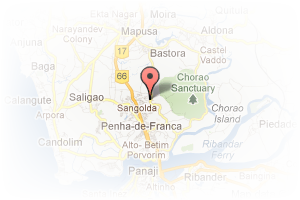About
WORKING AS AN BROKER IN GOA REAL ESTATE
Operating Since: 1994
Dealing in: Sale/Purchase and Rent/Lease of Independent Houses, Apartments / Flats, Residential Plots / Lands, Holiday Homes
Areas of Operation
Properties
Expert Reviews By Escala Realty India Pvt Ltd
Review of Divar Island, North Goa
Stepping off the ferry from Old Goa onto beautiful dreamy Island of Divar, you have the distinct feeling of entering a time machine and being transported to the time before. Surrounded by marshy waters and crisscrossed with sleepy single-lane roads, the island makes for lovely, languid exploration, it’s a serene place to take in the atmosphere of old-time rural Goa.
The largest settlement on the island is sleepy but picturesque Piedade. But Divar, whose name stems from the Konkani dev and vaddi (translated as ‘place of the Gods’), has an important Hindu history that belies its modern day tranquillity.
Before the coming of the Portuguese, Divar was the site of two particularly important temples – the Saptakoteshwara Temple (moved across the river to Bicholim when the Portuguese began to persecute the Hindus), as well as a Ganesh temple that stood on the solitary hill in Piedade. The former contained a powerful Shivalingam (phallic symbol representing the god Shiva), which was smuggled during the Inquisition to Naroa on the opposite side of the river to the Temple of Saptkotashwar. It’s likely that the Ganesh temple, meanwhile, was destroyed by Muslim troops near the end of the 15th century, since the first church on this site was built in around 1515.
The church that occupies the hill today, the Church of Our Lady of Compassion, combines an impressive facade with an engagingly simple interior. The ceiling is picked out in plain white stucco designs, and the windows are set well back into the walls, allowing only a dim light to penetrate into the church; the views alone, however, make Piedade and its church worth the trip.
Beside the church, a small cemetery offers one of only a few fragments of the once grand Kadamba dynasty. The small chapel in its grounds was converted from an older Hindu shrine, and the carving, painted plaster ceiling and faint stone tracery at the window all date from before the death of the Kadamba dynasty in 1352. Look around for the priest, who’ll unlock the chapel for you to take a look.
Pros:
- Serene Location
- Celebrity
- Charm and Heritage
Cons:
- Lack of things to do
- One has to cross by ferry

